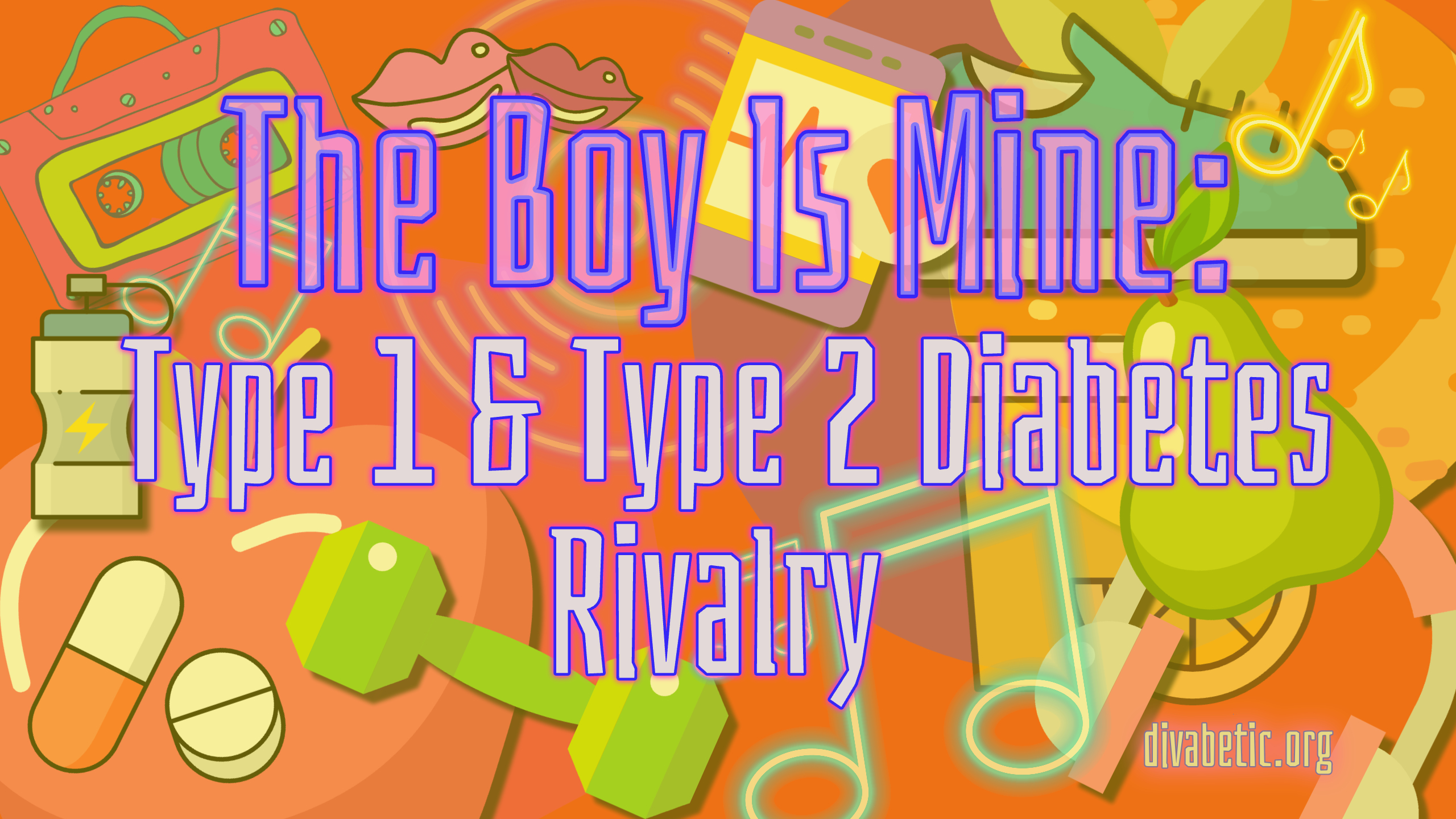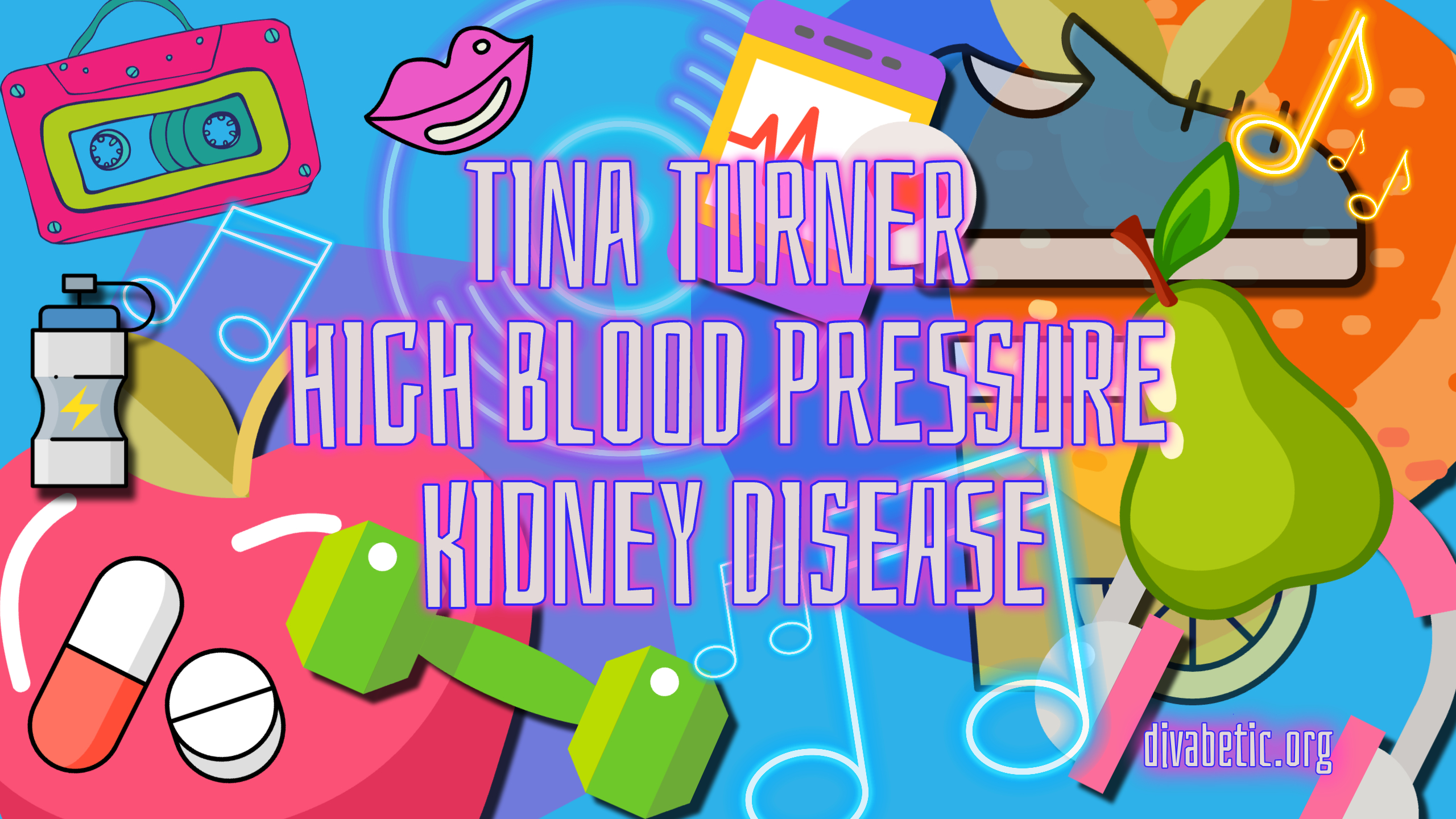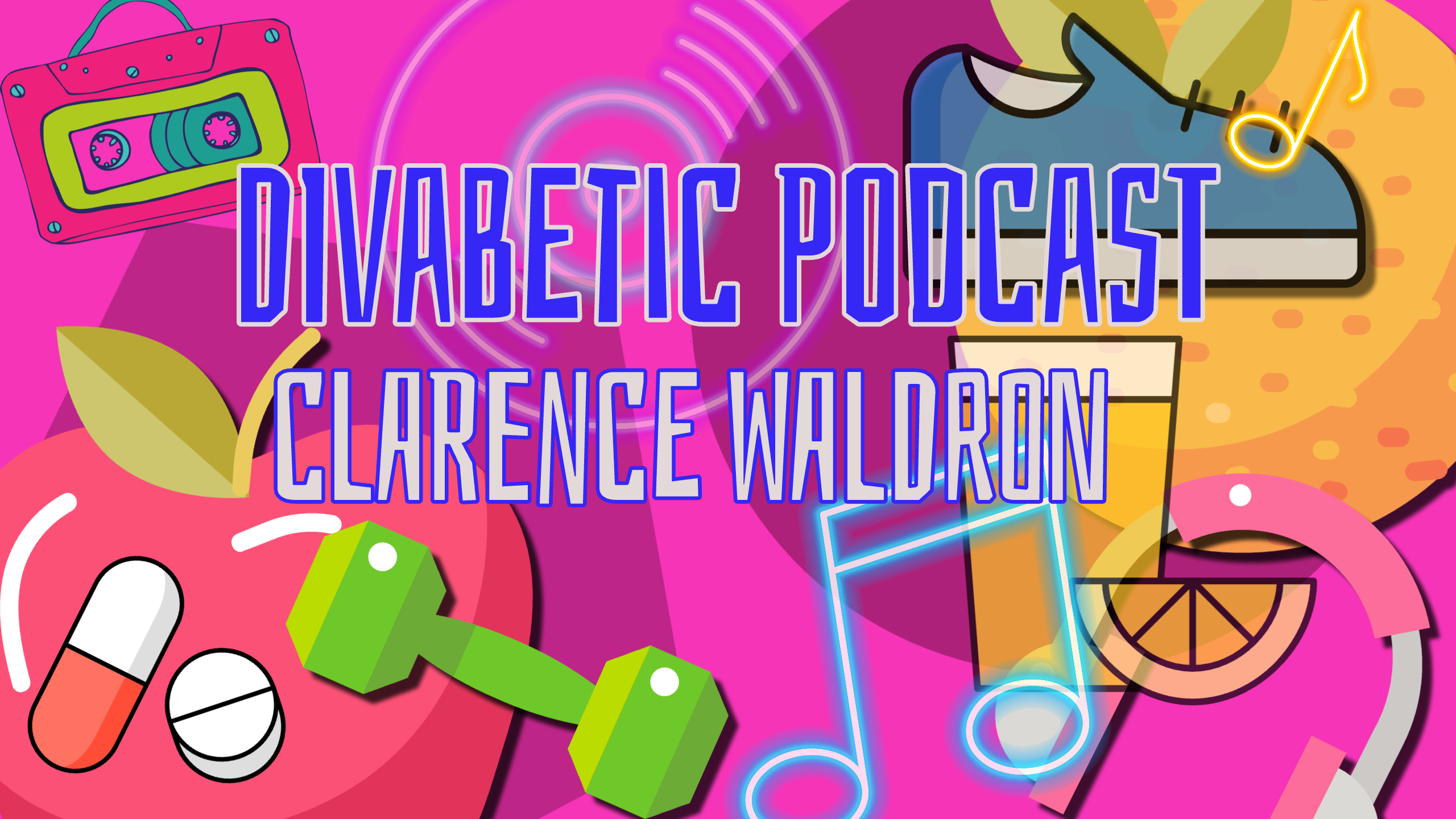Alexander Zverev Battles French Open Officicals About Injecting Insulin in Public
Imagine competing for one of the tennis world’s biggest titles and being told you can’t take your life-saving medication during a match because it looks weird.
At this year’s French Open, tennis player Alexander Zverev, who has been living with type 1 diabetes since age three, has struggled with tournament officials’ lack of awareness regarding insulin therapy.
Repeatedly he has been told to either seek medical attention or leave the court during matches when administering his self-care.
Even though many people living with type 1 diabetes are accustomed to getting strange looks from strangers when they administer insulin out in public, it still seems shocking to hear what’s happening at the French Open.
An umpire told Alexander that it looks “weird” if he injects himself on court. As a result, the official said he could not take insulin on court and was required to take a bathroom break instead. However, the French Open has a strict limit to the number of bathroom breaks a player can take under the rules, which Alexander noted could compromise his health, ‘guys, I might have to walk off the court four or five times. Decide what you want me to do’.”
To hear that he’s still winning matches while dealing with these issues is incredibly inspiring. In a previous match against American tennis player Frances Tiafoe, Alexander said there was a “supervisor who didn’t know that I was diabetic,” adding: “I then gave myself an injection, and he panicked and said I had to call a doctor if I gave myself anything.”

I hope Alexander’s brave stance in the face of opposition inspires others to take their medicine or injections as prescribed, even if they have to do it in a public place.
Managing your blood sugars with medicine or injection shouldn’t come with shame. Your health is a top priority, no matter what anyone else thinks. Always remember that.
Delaying your injection isn’t always possible, so you must do what’s best to manage your diabetes. You can’t control how other people respond. However, you can kindly and respectfully explain what you’re doing and why it’s essential if asked.
Thankfully, Alexander shared that this lack of understanding doesn’t happen at every tennis tournament stating, “on the ATP (Association of Tennis Professionals) Tour, I do it on the court; here (French Open), they don’t allow me to do it,” Alexander told Eurosport Germany.
Let’s rally behind him as he heads into his Semi-Finals match tomorrow and do our part to raise awareness for insulin therapy.
Clarence Waldron talks about his stroke, recovery, working as Senior Editor and Writer of Jet Magazine, and his memories of Luther Vandross and Aretha Franklin.
Twenty years ago, Clarence interviewed Luther’s mother, Mrs. Mary Ida Vandross, for Jet Magazine after Luther suffered a stroke due to mismanaged type 2 diabetes. Clarence’s story is an excellent reminder of why it’s essential to ACT F.A.S.T. if you or a loved one is experiencing a stroke. The acronym FAST (Facial drooping, Arm weakness, Speech difficulties, and Time) has been used by the National Stroke Association, American Heart Association, and others to educate the public on detecting stroke symptoms.
Earlier treatment results in a greater chance of recovery, a reduced likelihood of permanent disability, and a lesser need for extensive rehabilitation. You’ll quickly hear Clarence’s upbeat attitude and ferocious appetite for music and divas have served him well during his recovery.
Throughout this podcast, we feature music from Aretha Franklin’s Get It Right album and Luther Vandross’s Live At Radio City Music Hall 2003 20th Anniversary Edition album courtesy of SONY Music.
The Boy Is Mine Spotlights Conflict Between People With Type 1 And Type 2 Diabetes
For instance, the typical assumption is that people with type 2 diabetes will be overweight and not use insulin therapy, while people with type 1 diabetes will be, if anything, underweight.
But these perceptions just aren’t always accurate. Around 20% of people with type 2 diabetes are of a healthy weight when diagnosed, and many of them use insulin therapy.
The official music video of The Boy Is Mine by Brandy & Monica from the album Never Say Never was released in 1998.
Choosing Friendship Over Drama
Sadly the song’s success didn’t translate to love for each other in real life. In a 2012 radio interview, Monica said, “We were young. We could barely stay in the room with each other. By no means was it jealousy or envy. She and I are polar opposites, and instead of embracing that, we used our differences as reasons not to be amongst each other.”
Jet Magazine’s Senior Writer and Editor, Clarence Waldron, shares his experience living with stroke, its recovery, and memories of interviewing Luther Vandross and Aretha Franklin on this episode of Divabetic’s podcast.
Coincidentally, Aretha and Luther teamed up on the duet Doctor’s Orders. Luther and Aretha developed a dynamic musical partnership, leading to beautiful and triumphant music. Luther told Rolling Stone magazine, “Aretha was one of my key influences, as I used to walk to school carrying my school books along with her album!” As time progressed, hits progressed. Jump To: The tag-team duo’s signature classic gave Aretha her tenth #1 R&B album.
Their electrifying duet, Doctor’s Orders, appears on Aretha’s album What You See Is What You Sweat (1991). We are ever so grateful to have experienced the impeccable talents of two gifted, legendary artists.
Weight Watchers Prescribing Weight Loss Drugs Like Ozempic
The news that WeightWatchers will be prescribing popular Weight Loss medications like Ozempic stinks. I wish they would admit counting points doesn’t work for everyone and apologize to those who spent their time, money, and self-worth trying to reach their goals via their program.
So many people who have been on WeightWatchers return to the program after leaving. They can’t sustain their results because counting points is unsustainable.
So now, WeightWatchers has decided to cash in on the mindset of a quick fix.
This is another example of WeightWatchers riding the newest trend to sell weight loss. In 2018, they tried unsuccessfully to adapt to a body-positive trend by rebranding to WW International. They replaced the word “diet” with “building healthy habits” and configured their messaging to highlight wellness goals instead of weight loss.
Of course, WeightWatchers is already fending off criticism for their new acquisition.
“We have no interest in prescribing medications to those who are trying to lose 10 pounds for a reunion,” WW’s chief scientific officer, Gary Foster, told the Wall Street Journal.
WeightWatchers stresses they added this tool to their arsenal to support customers who already use semaglutides like Ozempic and Wegovy and to help get these drugs into the hands of the patient population they were intended for: people managing diabetes and those looking to lose weight as part of a doctor-recommended health plan.

Weight Watchers bought Sequence, a telehealth operator that can prescribe medications under brand names, including Ozempic and Wegovy.
Ozempic is a once-weekly injection used to treat Type 2 diabetes. It’s not approved for weight loss, but people taking it tend to lose weight. Wegovy is a higher-dose version of Ozempic specifically approved for weight loss.
If interested, you will pay separately for your WeightWatchers membership and Sequence subscription. And Sequence memberships aren’t covered by insurance (but they will work with your insurance company to pay for medications). Additionally, WeightWatchers will offer new eating and exercise advice tailored for people taking these drugs.
Sadly, celebrities, tech moguls, and TikTok influencers, who do not have diabetes, have used the drug to lose weight in short time frames. People like Andy Cohen, Elon Musk, and the Kardashians and their followers’ usage has led to people with diabetes not being able to get their prescriptions. The side effects of Ozempic and similar weight loss drugs include gastrointestinal issues, abdominal pain, constipation, diarrhea, nausea, and vomiting. It may also cause thyroid tumors, thyroid cancer, pancreatitis, kidney failure, gallbladder problems, vision changes, hypoglycemia, and allergic reactions.
Many people post about their experience with drugs, like Ozempic, on social media. They’ve admitted that their appetite and cravings went through the roof after they stopped using it. It’s been tough for them to maintain their results.
The diet industry is a 50 billion per year industry. With more money than ever going into solutions for weight loss … you’d think we’d be moving in the right direction.
But we’re not. According to the CDC, approximately 42% of Americans are classified as having obesity.
Sugar-Free Red Velvet Cake Squares Recipe by The Diabetic Pastry Chef
Sugar-Free Red Velvet Cake Squares Recipe by The Diabetic Pastry Chef
Ingredients
1 cup all-purpose flour
1 cup white whole-wheat flour
1 tsp baking powder
1 tsp baking soda
3/4 tsp salt
2 Tbsp. cocoa powder
2 cups sugar-substitute of your choice
3/4 cup vegetable oil
2 eggs
1 cup buttermilk
2 tsp pure vanilla extract
2 tsps. red food coloring
1 tsp vinegar
1/2 cup hot coffee
Ingredients
1 cup all-purpose flour
Directions
Combine all dry ingredients in a large bowl; set aside.
In the bowl with an electric mixer, combine sugar-substitute and vegetable oil. Add in the rest of the wet ingredients and mix well.
Add dry ingredients in thirds to wet ingredients, mixing just until combined.
Preheat oven to 350 degrees. Add batter to greased and floured 9×13″ pan. Bake for about 30 to 40 minutes, or until the cake pulls away from the sides of the pan and the center springs back when touched.
After cooling, sprinkle top with sugar-free confectioners sugar such as Swerve Confectioners. Serve cake cut into squares topped with whipped cream or whipped topping.

Although red velvet cake is generally linked with Valentine’s Day, it is also served at Juneteenth parties. For Juneteenth celebrations, the color red represents the struggle and bloodshed of the enslaved as well as the ultimate resilience of the people.
Clarence Waldron talks about his stroke, recovery, working as Senior Editor and Writer of Jet Magazine, and his memories of Luther Vandross and Aretha Franklin.
Twenty years ago, Clarence interviewed Luther’s mother, Mrs. Mary Ida Vandross, for Jet Magazine after Luther suffered a stroke due to mismanaged type 2 diabetes. Clarence’s story is an excellent reminder of why it’s essential to ACT F.A.S.T. if you or a loved one is experiencing a stroke. The acronym FAST (Facial drooping, Arm weakness, Speech difficulties, and Time) has been used by the National Stroke Association, American Heart Association, and others to educate the public on detecting stroke symptoms.
Earlier treatment results in a greater chance of recovery, a reduced likelihood of permanent disability, and a lesser need for extensive rehabilitation. You’ll quickly hear Clarence’s upbeat attitude and ferocious appetite for music and divas have served him well during his recovery.
Throughout this podcast, we feature music from Aretha Franklin’s Get It Right album and Luther Vandross’s Live At Radio City Music Hall 2003 20th Anniversary Edition album courtesy of SONY Music.
Tina Turner, Mismanaged High Blood Pressure & Chronic Kidney Failure
Tina Turner is ‘simply the best’ for raising awareness for the link between untreated high blood pressure and kidney failure during her lifetime.
“I can’t remember ever getting an explanation about what high blood pressure means or how it affects the body,” Tina Turner said in an article for Show Your Kidneys Love, an international campaign for kidney health.
“My kidneys are victims of my elevated blood pressure” -Tina Turner
She was on dialysis after having a kidney transplant years ago due to untreated hypertension. Untreated hypertension can cause blood vessels to narrow, decreasing blood flow to the kidneys. Without proper blood flow, the kidneys cannot remove excess fluid and waste from the body — and as that fluid builds up, blood pressure will only increase further. Chronic kidney disease may cause arms, legs, and face swelling. It’s a dangerous cycle that can lead to kidney failure, but intervening early is possible.
“I considered high blood pressure my normal,” Tina Turner is quoted on Show Your Kidneys Love’s website. “Hence, I didn’t really try to control it. In 1985 a doctor gave me a prescription for pills of which I was supposed to take one a day, and that was it. I didn’t give it any more thought. After suffering a stroke in 2009 because of my poorly controlled hypertension I struggled to get back up on my feet. This is when I first learned that my kidneys didn’t work that well anymore. They had already lost thirty-five percent of their function. I tried to learn more about these organs’ function and meaning. Most people probably don’t even know where their kidneys are located and what they are for until their health is at stake.”
Mismanaged high blood pressure is the second leading cause of kidney failure in the US.
Memorial Day Weekend is an excellent time to inform people of the link between alcohol and high blood pressure. Drinks with friends can be the best part of a three-day weekend, but when, what, and how much you drink matters.
Research shows drinking too much alcohol can raise blood pressure to unhealthy levels. Having more than three drinks in one sitting temporarily raises blood pressure. Repeated binge drinking can lead to long-term increases in blood pressure.
What is Moderate Drinking?
Moderate drinking means having no more than one drink daily for women and no more than two drinks for men.
One can argue that Tina Turner frequently admitted she didn’t smoke or drink alcohol. But she admitted that after being diagnosed with high blood pressure in 1978, she thought of it as her “normal” and didn’t attempt to control it.
“I put myself at great danger by refusing to accept the reality that I required daily medication for the rest of my life,” she wrote on Instagram on March 9.
“Show your kidneys love. They deserve it.”
We’re discussing kidney disease and diabetes on this Divabetic podcast with musical inspiration from P.M. Dawn.
Prince Be, the psychedelic pop-rap group P.M. Dawn’s frontman, suffered various health problems from mismanaged type 2 diabetes. He had several strokes, including one in 2005 that left him partly paralyzed, and gangrene, which led to the partial amputation of one leg. He died of renal failure resulting from complications of diabetes at age 46.
Renal failure (often called kidney failure) is when the kidneys stop working and cannot remove waste and extra water from the blood or keep body chemicals in balance. Acute or severe renal failure happens suddenly (for example, after an injury) and may be treated and cured. Chronic renal failure develops over many years, may be caused by conditions like high blood pressure or diabetes, and cannot be cured. Chronic renal failure may lead to dialysis (cleaning the blood by passing it through a membrane or filter) or a kidney transplant.
Podcast Guests: Poet Lorraine Brooks, Mama Rose Marie, Lynette Luckers from the Marion Luckers Kidney Foundation, Chef Robert Lewis aka The Happy Diabetic, Janis Roszler, RD, CDCES, FAND and Luther Vandross Superfan, and Historian Leon Petrossian.
Tina Turner believed most people don’t know their kidneys are located; this video proves they don’t know where their pancreas is either! Your pancreas produces insulin. Insulin lowers blood sugar levels in your body.
Sugar Substitutes, Gut Health and Type 2 Diabetes
The whole conversation around the risks of consuming sugar, added sugars, and artificial sugar substitutes is confusing for anyone, especially those with diabetes.
The health risks associated with consuming too much sugar in your foods and drinks are alarming. But sugar is sneaky. When you think you figured it out, you look closely at nutrition labels, only to discover manufacturers have ways of hiding sugar in foods and drinks marketed as ‘healthy.’

Divabetic Podcast on Stroke
On Divabetic’s podcast, Clarence Waldron shares his stroke, recovery, working as Senior Writer and Editor from Jet Magazine, and his memories of legends Luther Vandross and Aretha Franklin.
Twenty years ago, Clarence interviewed Luther’s mother, Mrs. Mary Ida Vandross, for Jet Magazine after Luther suffered a stroke due to mismanaged type 2 diabetes.
When I was growing up Jet Magazine was everywhere — barbershops, salons, and waiting rooms. The digest-size magazine featured pop culture stories, What’s On TV, Wedding Announcements and Anniversaries, the (in)famous Jet Beauty of the Week, and Jet’s Top 20 Singles.
Clarence’s story is an excellent reminder of why it’s essential to ACT F.A.S.T. if you or a loved one is experiencing a stroke. The acronym FAST (Facial drooping, Arm weakness, Speech difficulties, and Time) has been used by the American Stroke Association, American Heart Association, and others to educate the public on detecting stroke symptoms.
Earlier treatment results in a greater chance of recovery, a reduced likelihood of permanent disability, and a lesser need for extensive rehabilitation.
You’ll quickly hear Clarence’s upbeat attitude and ferocious appetite for music and divas have served him well during his recovery.
Throughout this podcast, we feature music from Aretha Franklin’s Get It Right album and Luther Vandross’s Live At Radio City Music Hall 2003 20th Anniversary Edition album courtesy of SONY Music.

Get It Right is Aretha Franklin’s twenty-ninth studio album, released in 1983 by Arista Records. It was produced by Luther Vandross, following his successful teaming with the singer for the Gold-certified album, Jump to It. Album highlights include I Wish It Would Rain, I Got Your Love, and Every Girl Wants My Guy.
Divabetic Podcast Inspired by Etta James
Etta James inspires this episode of Divabetic’s podcast.
After the six-time Grammy award winner conquered her drug addiction in 1988, she struggled with her weight. At the peak of her obesity, she reportedly weighed as much as 400 pounds. At just five foot three, this weight gain often left her bedbound, and when she did appear publicly, she was seen in a wheelchair. She was unable to perform during this period.
However, after successful gastric bypass surgery, she lost over 200 pounds and began to perform again.
She told Ebony Magazine in 2006 she could sing “lower, louder and longer” than before.
However, she still had enormous difficulty adjusting to her smaller stomach. “I had trouble keeping food down,” she said. Her mental health also suffered. “I went through a depression. You’re doing well, and then all of a sudden you’re not. I thought I was going to fail.”
Etta James’s openness about her frustrations in managing her weight after the surgery has helped other people cope with the same issues. It’s important to remember you’re not alone if you struggle with weight loss issues, depression, anxiety, or low self-esteem. You owe it to yourself to get comprehensive treatment for all your symptoms—including your mental health symptoms. Seek a referral to a mental health professional to get the treatment you need for any mental health issues you are dealing with.
As she entered her 70s, Etta James began struggling with health issues. She was hospitalized in 2010 for a blood infection and other ailments. It was later revealed that the legendary singer suffered from dementia and was receiving treatment for leukemia.
Divabetic Diabetes Outreach At the Apollo Theater
Nothing beats presenting diabetes outreach with DAZZLE at the Apollo Theater. One of my all-time favorite moments in Divabetic history was playing Serve, Taste, or Trash! Food Game at the Apollo Theater because it was an opportunity to combine honoring Luther’s musical legacy with diabetes wellness outreach.
The game’s initial goal was to allow confessed picky eaters to express dislike of certain fruits and vegetables and then challenge them to try them differently. The game was born out of my dislike of peas.
Experts agree that we shouldn’t overwhelm ourselves with a plate full of new foods. Instead, serve familiar favorites and one new food you’re ready to try. Commit to just a few bites. You’ll still have something to eat if you don’t like it.
However, Serve, Taste, or Trash‘s aim morphed into raising awareness for the amount of added sugars in popular food and drinks.
On this episode of Divabetic’s podcast, we’re talking about ADDED SUGARS with musical inspiration from Sade.
Added sugars contribute calories to your diet but no essential nutrients.
Many people consume more sugar than they realize. Knowing how much sugar you consume is essential because our bodies don’t need sugar to function properly.
How Much ADDED SUGAR Is Too Much?
The American Heart Association recommends limiting added sugars to no more than 6 percent of calories each day. For most American women, that’s no more than 100 calories per day or about 6 teaspoons of sugar. It’s 150 calories per day for men, or about 9 teaspoons. The AHA recommendations focus on all added sugars without singling out any particular types, such as high-fructose corn syrup.
As in most of my Man-in-the-street videos, nothing was pre-planned at the Apollo Theater. My friend Arthur and I just showed up, found a spot, and started shooting.
When we went around the block to the stage door, the Apollo historian, Billy Mitchell, magically appeared. He was gracious enough to agree to be interviewed.
Billy and I discussed Luther Vandross’s history at the Apollo Theater. Luther was a member of Apollo’s musical ensemble called Listen to My Brother.
The ensemble was made up of 16 New York City kids. Peter Long put the group together from the Apollo, whose wife, Loretta Long, was a Sesame Street cast member.
The 16-member group performed at the Apollo Theater in the late 1960s, opening for many of the venue’s famous performers and making several musical contributions to Sesame Street. Luther sang lead vocals on “You Gotta Learn.”
Luther confessed during a Motown special taped at the Apollo that he’d blown Amateur Night four times.
Crazy as it sounds, we were filming using a small digital camera (not even an -iPhone!!!), so the fact that he stopped to talk with a guy in a fruit suit was amazing!
From 2003 – 2005, I was fortunate to participate in several Health Fairs in the lobby of the Apollo Theater. I met so many wonderful people living with, at risk, and affected by diabetes whose interest and support of my diva brand of diabetes outreach motivated me to keep on, keeping on.
It was days like this in the blazing Summer sun when haphazardly, we met terrific, colorful characters in the street who played along with the Divabetic health games that kept me going. These moments of sheer coincidence have helped me create new ways to inform people entertainingly.
On this episode of Divabetic’s podcast, we’re talking about ‘THE SWEETEST TABOO’ aka ‘ADDED SUGAR’ with musical inspiration from Sade.
Sugar is everywhere. But do we understand the impact it has on our diabetes health?
You may think of sweets, chocolate, sodas, table sugar, and perhaps fruit if asked to name sugary foods. But sugar also appears in savory foods such as ready meals, soups, salads, sauces, and ‘healthy’ foods such as breakfast cereals and yogurt. Furthermore, starches such as bread, pasta, rice, and potatoes also convert to sugar in our bloodstream, having the same impact on our bodies. These ‘hidden sugars’ can add a surprising amount to our daily intake.
Guests include Patricia Addie-Gentle RN, CDCES, Tameka Milline, Catherine Schuller, Kathy Dolgin aka ‘High Voltage’, and Stephanie MacKendree. Throughout the podcast, we feature music from ‘The Essential Sade’ album courtesy of SONY Music.








